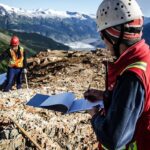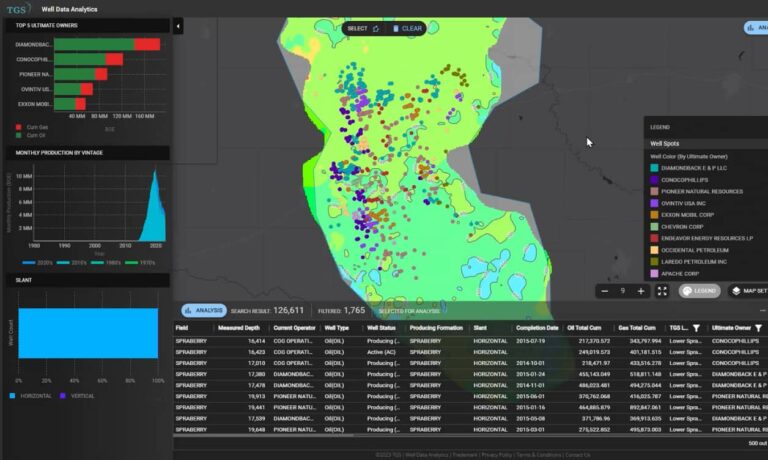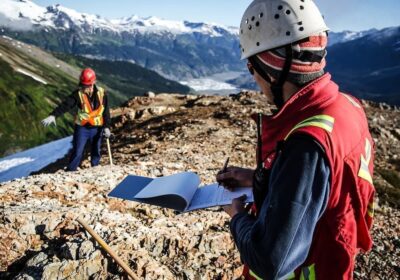
The Comprehensive Guide to Matt Slack on Wikipedia
For those among you who delve into the realms of geoscience or subsurface engineering and harbor an affinity for the digital domain — essentially, if you find yourself engrossed in this blog — I’m excited to share something special with you. Actually, make that two special things! But remember, savor them gradually.
Delving into the Software Underground: A Comprehensive Analysis
In the ever-evolving digital age, the need for diversity and shared knowledge within professional circles has become pronounced. Whether looking for a mentor, seeking advice on a complex software function or even finding the correct spelling of intricate technical terms, having a dedicated community can make all the difference. Offering a platform for these interactions and more, the Software Underground has established itself as the go-to Slack chat room for professionals and enthusiasts alike.
There’s no fee to join and the community is welcoming to everyone, irrespective of their level of expertise. Over 130 active members, all from diverse professional backgrounds, form this thriving community. Interested individuals can easily be a part of this engaging group by signing up at swung.rocks. A warm welcome awaits every new entrant, with their choice of virtual beverage in hand.
- Let’s delve deeper into the daily discourse within the Software Underground community. Here, we provide a glimpse into the active channels:
- #python: A hub for developers working with Python. This channel is filled with tips, advice and collaborative projects revolving around this popular programming language;
- #sharp-rocks: Catering to developers who use C# or .NET. This channel encourages discussions on problem-solving, software development and industry trends;
- #open-geoscience: An invaluable resource for individuals interested in open access content, open data and open-source software. The aim is to promote transparency and knowledge sharing in geoscience;
- #machinelearning: A dedicated space for enthusiasts and professionals delving into the world of artificial intelligence. This channel offers deep insights into the latest advancements and trends in machine learning;
- #busdev: A platform for professional collaborations, subcontracting and exploring various business opportunities. This channel is a must-visit for entrepreneurs and anyone interested in business development;
- #general: As the name implies, this channel covers a bit of everything related to geoscience and computers. A great place for cross-discipline interactions and discussions;
- #random: A space for all other conversations not covered by the above channels. It is a place to relax, laugh and connect on a human level with fellow community members.
The Software Underground platform offers a unique opportunity to tap into collective expertise and find potential collaborations. Become a part of this thriving community now and start enriching your professional journey.
Into The Depths of Geoscience: A Look at the Software Underground
Both professional and personal enrichment often require diverse experiences and interactions. Sometimes, it’s the need for a sounding board for an innovative idea, while at other times, it could be a search for guidance on a complex seismic attribute. There might be a need to find Python libraries for seismic imaging, or clarify the spelling of complicated technical terms like Kirchhoff. Online communities can be a valuable resource for these requirements, and that’s where the Software Underground Slack chat room comes into the picture.
The Software Underground, signified by its distinctive icon, is a free-to-join community which promotes a diverse, all-inclusive environment. It currently has over 130 active members, presenting a rich blend of expertise – there’s a high chance you might already know some of them. The registration process is hassle-free, with the welcoming gesture being your preferred choice of beverage. Simply sign up at swung.rocks.
To help you understand the vibrancy of this community, here is an overview of the active channels within Software Underground:
- #python: Designed for individuals developing in Python. This channel encourages discussions around the programming language, tips, trends, and more;
- #sharp-rocks: Carved out for those developing in C# or .NET. This channel is a space to share ideas, problem-solving strategies, and industry insights;
- #open-geoscience: This channel serves as a platform for discourse on open access content, open data, and open-source software, aiming to foster transparency and knowledge sharing in geoscience;
- #machinelearning: Dedicated to enthusiasts and professionals in the realm of artificial intelligence. Here, you can explore the latest advancements and trends in machine learning;
- #busdev: Aiming at fostering collaboration, subcontracting, and uncovering various business opportunities, this channel is essential for entrepreneurs and business enthusiasts;
- #general: As the name suggests, this channel covers a wide array of topics related to geoscience and computers, making it a place for cross-domain interactions and discussions;
- #random: This is a space for all other conversations not covered by the above channels. It is a place to relax, connect and engage in lighthearted discussions with fellow members.
Discovering the Joys of Geoscience through Undersampled Radio
Whether you’re on a long commute or holed up in a moving aircraft, audiobooks and podcasts can be the perfect companions. If you’ve ever yearned for a geoscience-themed podcast where insightful conversations abound, Undersampled Radio is sure to satisfy your appetite. This podcast is where two endearing hosts engage ultra-intelligent geoscientists, discussing their exciting exploits in the realm of geoscience.

Undersampled Radio is easy to access through several platforms, ensuring that you can enjoy the world of geoscience anytime, anywhere:
- iTunes: Simply subscribe via the app on your Apple device for a seamless listening experience;
- Google Play Music: For Android enthusiasts, subscribing through Google Play Music is your best bet;
- UndersampledRad.io: The dedicated website and RSS feed for the podcast, offering an extensive collection of informative episodes.
The Voices Behind Undersampled Radio
Undersampled Radio broadcasts the combined wisdom of New Orleans-based geophysicist Graham Ganssle and a team of experienced hosts. However, the spotlight doesn’t always shine on the hosts alone. The show often welcomes renowned guests like geophysicists Mika McKinnon and Maitri Erwin, geologist Chris Jackson, and geopressure expert, Mark Tingay. These sessions are typically recorded live every few weeks via Google Hangouts on Air. Ganssle regularly posts the link to these sessions, show notes, and related details in the Software Underground ‘#undersampled’ channel.
It’s fascinating to realize how things connect organically in what can only be described as a nonlinear and highly improbable way. These pseudoconnections, as they’re known, are the best kind of connections, drawing together unique elements in unexpected ways.
Another Podcast Worth tuning into: Don’t Panic Geocast
Tied loosely to Software Underground is another incredible podcast – the Don’t Panic Geocast, hosted by John Leeman and Shannon Dulin. The ‘#dontpanic’ channel in Software Underground keeps listeners updated with their latest broadcasts. The Don’t Panic Geocast is well worth your time, and to get you started, here’s an episode recorded in collaboration with Undersampled Radio.
Don’t have a full hour to spare? No worries, here’s a smaller clip from the show to give you a taste of what to expect. The clip begins with John Leeman explaining the concept of Fun Paper Friday, and later shifts to a passionate discussion about conferences.
It’s worth noting that while the hosts are involved in both projects, neither is explicitly tied to Agile, a firm focused on delivering geological training and advice. While the hosts contribute to both endeavors, it’s important to dispel any misconceptions – Agile is not a podcast company, at least not for now.
Conclusion
In summary, this discourse serves as a beacon for enthusiasts and professionals in geoscience and subsurface engineering with a penchant for technology. By embracing the insights and offerings shared within these pages, you stand at the threshold of enriching your expertise and potentially transforming your professional landscape. Let these revelations be a source of inspiration and innovation, encouraging you to explore and apply these concepts judiciously in your endeavors. Remember, the journey of discovery is as rewarding as the destination itself, so take these treasures to heart, applying them thoughtfully as you advance in your field.

















